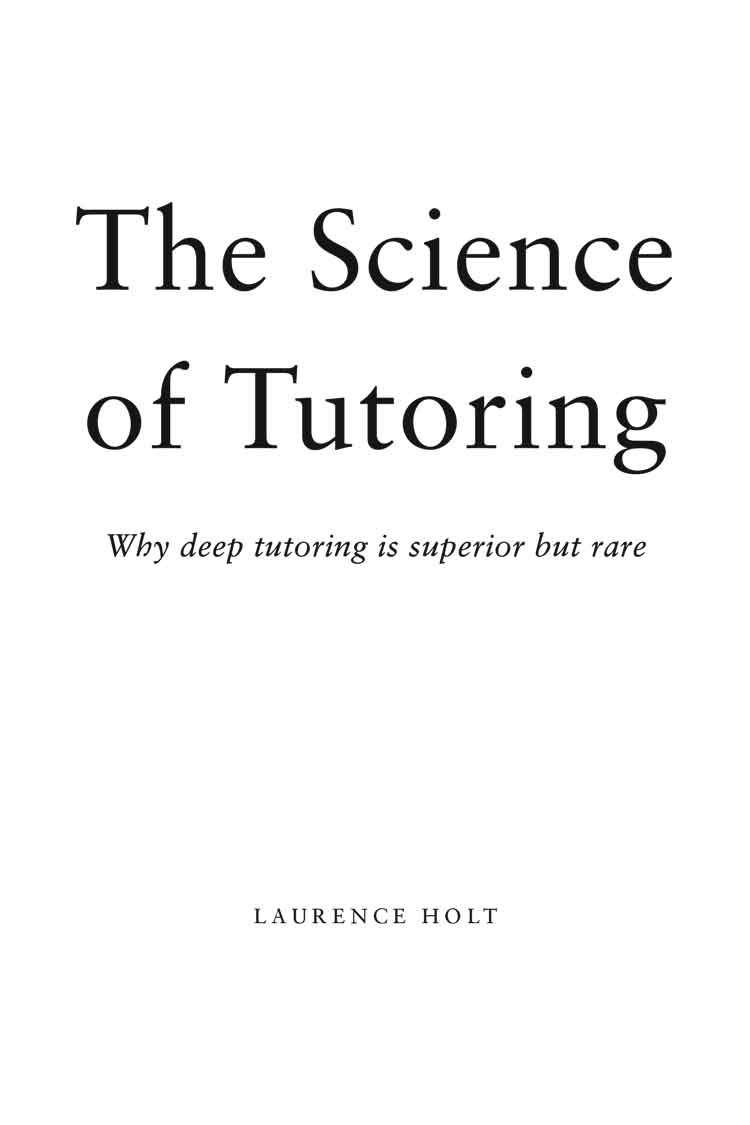3 / Scaffolding
Richard Feyman’s father intuitively followed these prescriptions: he pitched his description of the physics at the level of a boy’s understanding (considerate explanation), gave young Feyman a follow-up to pursue (active explanation), and provided the explanation in response to a specific question (time for telling). Perhaps it should not be surprising that Feyman himself went on to become one of the world’s great explainers.
“Yes,” said Chi, softly. “Whoa,” said the young researcher, “I have cited you so many times!”
In the world of peer-reviewed journals and researchers whose lives turn to the rhythm of publication, “Chi, 1989” is how you refer to ideas. That paper, one of the most cited in all of cognitive science, tells of the discovery that having learners pause and explain to themselves what they just read increases how much of it they can remember later. Chi called it self-explanation. The marvel is that a technique so simple and so powerful has not found its way into every classroom in the country3.
At the time I met her, Chi had just published another paper, “Learning from Human Tutoring,” perhaps the most in-depth study of tutoring ever conducted. For the study, Chi and her team compiled transcripts of tutoring sessions on the human circulatory system. Students learned about the passage of blood through the body, lungs, and heart and why the system is arranged the way it is.
Chi coded each move that a tutor—or a tutee—made. She then calculated which moves correlated with learning gains. She found that explanations result in little learning, as we have already seen. According to Chi, that’s because garden-variety explanations don’t cause a student to do anything. In Chi’s view, it’s what a student does that drives learning. Explanations mostly elicit “uh huhs.” But a different move used by some of the tutors in the study was more promising:scaffolding.
“Scaffolding,” says Chi, “is a kind of guided prompting that pushes the student a little further along the same line of thinking.” It is a coordinated performance by the tutor and tutee. The tutor sets up a part for the tutee to play, one that requires them to do an increasing share of the cognitive work. The student is in the spotlight; the tutor is the director.
Chi provides a list of 15 types of scaffolding: 1. Pumping for more (“What else?”) 2. Hinting (“So, it’s kind of leaving out the lungs there?”) 3. Making fill-in-the-blank requests (“Okay, and it goes from the atrium to the …”) 4. Highlighting critical features of the task, calling attention to discrepancies between the current state and the goal (“This is good, but what about that?”) 5. Decomposing the task, reducing complexity by allowing the student to focus on one part at a time 6. Executing parts of the skill, allowing the student to execute others 7. Providing physical props or cue cards 8. Describing the problem in a way that orients the student to the important features 9. Comparing the current problem with a previously solved problem 10. Maintaining focus on the goal by recognizing progress toward it 11. Initiating a reasoning step or a task (“Name every part on there.”) 12. Completing the student’s reasoning step, jumping in and providing the correct answer when the student makes an error, without acknowledging that an error has been made 13. Asking a leading question (“And where do you think it goes?”) 14. Redirecting the student 15. Providing an example.
Scaffolding isn’t just asking a question; it’s nudging the student along a path toward a solution or a new understanding. The form of scaffolding—whether it’s a question, statement, command, or something else—doesn’t matter. It’s the intent of the move itself that matters.
With scaffolding, the intent is for the student to get further than they would without it. Carpenters lay plywood over joists to give them a safe place to stand while they build the next level. Picture a student standing on the plywood, wobbling. Perhaps one of the planks is cracked, or has fallen. The tutor’s role is to help them get stable and begin building the next level.
Russian psychologist Lev Vygotsky called this being in the zone of proximal development or zpd . It’s the zone in which the scaffolded student finds they are able to achieve something they may not have achieved alone.
Once the student is stable, the scaffolding can be gradually removed, leaving them with the ability to perform the new skill unaided. Educators, with an awkward mixing of metaphors, call this fading. The Romans built arches this way: they used wooden scaffolding to hold the arch up until the final piece, the keystone, was put in place. When they removed the scaffolding, the arch stood on its own. Some of them still do. Something similarly satisfying can happen for students: the last piece clicks into place, and their mental model achieves an integrity, a wholeness that allows it to stand on its own.
In Chi’s study of biology tutors, scaffolding was quite rare: around 6% of tutor utterances were scaffolds. Explanations were nearly 10 times as frequent. Students were much likelier to respond to a scaffold with something meaningful, not just “uh huh” but another brick in the arch. You could often see them doing real cognitive work, a strong indicator of learning.
Did students whose tutors provided more scaffolding learn more? Well, there is good news and bad. The good news is that scaffolding did indeed correlate with learning. The bad news is that the learning was shallow.
